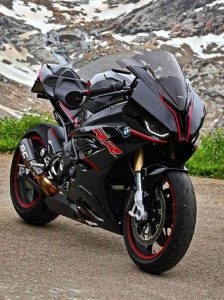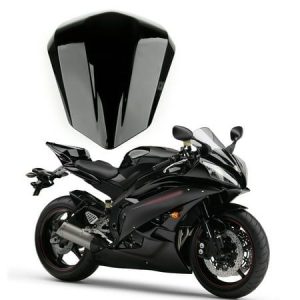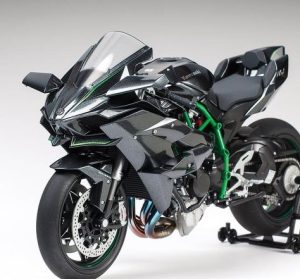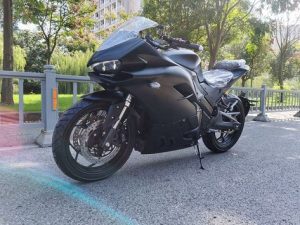Jun 21, 2024
Learning How to Ride a Motorcycle
Have you ever dreamt of cruising down the open road on a motorcycle? The feeling of wind in your hair and the thrill of the ride can be an exhilarating experience. But before you hit the highway, it’s crucial to learn how to ride safely and responsibly. This comprehensive guide will navigate you through the process of learning how to ride a motorcycle, from finding the right training course to mastering essential skills.
Getting Started: Essential Steps Before You Ride
Eagerness to ride is understandable, but safety comes first. Here are some initial steps to take before you hop on a motorcycle:
Licensing Requirements:
Every state has its own licensing requirements for motorcycle riders. Research the requirements in your area and obtain the proper motorcycle license. This will involve written and practical skills tests.
Motorcycle Safety Course:
Taking a motorcycle safety course is the best way to learn the fundamentals of safe riding. These courses are taught by experienced instructors and cover topics like motorcycle operation, safety gear, and accident avoidance.
Finding the Right Motorcycle:
Once you have your learner’s permit or motorcycle license, it’s time to choose a motorcycle. Opt for a smaller, lower-powered bike for beginners. This will help you gain confidence and develop your skills before moving to a larger motorcycle.
Gearing Up for Safety: Essential Motorcycle Clothing
Motorcycle safety gear is vital to protect yourself in case of an accident. Invest in high-quality gear that fits you properly. Here are the key elements:
-
Helmet: A properly fitted DOT-approved helmet is essential. It’s your first line of defense in a crash.
-
Jacket: Choose a durable motorcycle jacket made of abrasion-resistant material with padding at key impact zones like elbows, shoulders, and back.
-
Pants: Similar to your jacket, look for abrasion-resistant pants with padding. Consider pants with built-in knee and hip protectors.
-
Gloves: Motorcycle gloves protect your hands in a crash and provide a good grip on the handlebars.
-
Boots: Sturdy motorcycle boots offer ankle protection and improve your grip on the motorcycle’s controls.
Finding the Perfect Fit: Importance of Proper Gear Sizing
Proper fit is crucial for your safety gear to function effectively. Here are some tips for getting the right size:
-
Helmet: A properly fitted helmet should feel snug but comfortable. There should be minimal movement when you shake your head.
-
Jacket and Pants: Your jacket and pants should fit comfortably without restricting your movement while riding.
-
Gloves: Gloves should fit snugly but allow for good dexterity when operating the motorcycle’s controls.
-
Boots: Motorcycle boots should fit comfortably and provide good ankle support.
Remember: Safety gear is an investment in your well-being. Don’t compromise on quality or fit when choosing your motorcycle gear.
Basic Motorcycle Controls: Familiarize Yourself with the Machine
Before you start your motorcycle, take some time to familiarize yourself with the controls. Here’s a quick rundown of the essential controls:
-
Throttle: Controls the engine speed and acceleration. Rolling the throttle forward increases speed, while rolling it off or closing it slows the motorcycle down.
-
Brakes: The front brake lever on the right handlebar controls the front wheel brake. The rear brake pedal on the right footpeg controls the rear wheel brake.
-
Clutch: Located on the left handlebar, the clutch lever is used to engage and disengage power to the rear wheel.
-
Gear Shift: The gear shift lever on the left footpeg is used to change gears. Most motorcycles have a one-down, four-up or five-up gear shifting pattern.
-
Kill Switch: The kill switch cuts off power to the engine in case of an emergency.
Learning these controls and practicing their use in a safe environment is crucial before riding on public roads.
Mastering Basic Skills: Building Confidence on Two Wheels
Once you’re comfortable with the motorcycle’s controls, it’s time to practice basic riding skills in a controlled environment. A large, empty parking lot is a great place to start. Here are some fundamental skills to focus on:
-
Balance and Control: Practice slow-speed maneuvers like walking the motorcycle, tight circles, and figure eights. This will help you develop a feel for the bike’s balance and weight distribution.
-
Braking: Practice controlled braking techniques in a straight line at slow speeds. Learn how to apply both brakes smoothly and progressively.
-
Shifting Gears: Master the art of smooth clutch control and gear changes. Practice accelerating, shifting gears, and coming to a complete stop.
Remember: Mastering these skills takes time and practice. Be patient with yourself and focus on progressing at a safe pace.
Hitting the Road: Graduating to Public Streets
Once you’ve mastered basic skills in a controlled environment, you can gradually transition to riding on public streets. Here are some important safety tips to remember:
-
Always wear your safety gear: This includes a DOT-approved helmet, jacket, pants, gloves, and boots.
-
Start with familiar roads: Choose quiet streets with low traffic volumes to practice your skills.
-
Ride defensively: Be aware of your surroundings and anticipate the actions of other drivers.
-
Obey traffic laws: Follow the speed limit, use turn signals, and come to complete stops at stop signs and red lights.
-
Ride with a buddy (optional): Consider riding with a more experienced rider for additional guidance and support, especially during your initial forays onto public streets.
-
Never ride under the influence: Alcohol and drugs can significantly impair your judgment and reaction time.
The Journey Continues: Education and Lifelong Learning
Motorcycle riding is a continuous learning process. Here are some ways to stay safe and improve your skills as a rider:
-
Advanced Riding Courses: Take advanced rider courses to hone your skills and learn more about accident avoidance techniques.
-
Practice Regularly: The more you ride, the more comfortable and confident you will become on your motorcycle.
-
Stay Informed: Read motorcycle safety manuals and watch educational videos to learn from experienced riders.
-
Maintain Your Motorcycle: Regular maintenance is crucial for your motorcycle’s performance and safety. Follow the manufacturer’s recommended maintenance schedule.
By following these tips and committing to lifelong learning, you can ensure a safe and enjoyable experience on your motorcycle journeys.
Learning to ride a motorcycle can be an exciting and rewarding endeavor. But remember, safety is paramount. Take your time, prioritize safety, and enjoy the ride!




